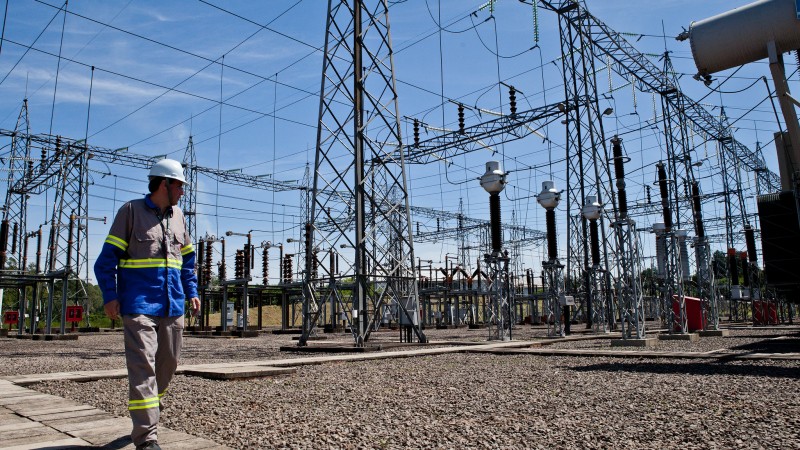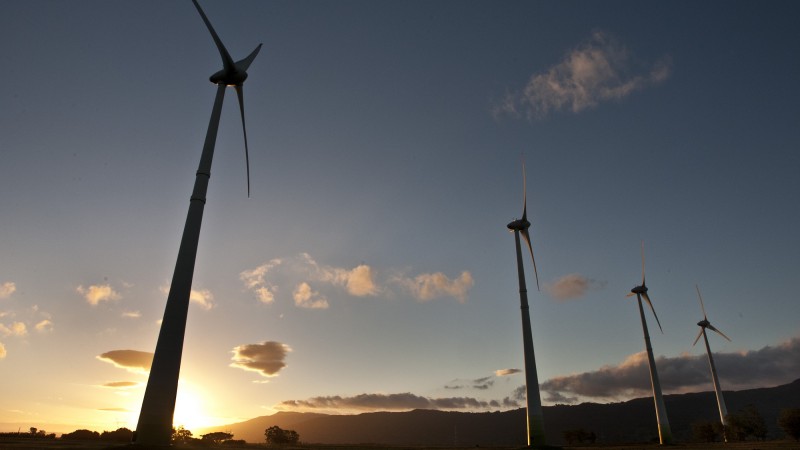Energy
 Rio Grande do Sul has over 300 enterprises in operation, with 9.3 GW of power capacity, according to the Brazilian Electricity Regulatory Agency (ANEEL). In the coming years 2.7 GW are scheduled to be added to the State’s generation capacity from 20 enterprises under construction and another 31 that have been approved. The state’s energy supply comes from hydroelectric dams and thermoelectric plants powered by fuel oil, natural gas and coal, as well as from alternative energy sources such as wind and small thermal and hydroelectric facilities. Rio Grande do Sul has also been investing in the development of biofuels such as biodiesel, ethanol and biogas. In 2015, the state counted on nine plants for the manufacture of biodiesel, with an production of 606 million liters and nominal production capacity of 1,363 million liters, being the largest Brazilian producer (ANP, 2015). Electric power distribution is mostly done by three large concessionaires: Distribuidora Gaúcha de Energia S.A. (AES Sul), Companhia Estadual de Energia Elétrica (CEEE) and Rio Grande Energia S.A. (RGE). There are also five small concessionaires and 15 rural electric cooperatives.
Rio Grande do Sul has over 300 enterprises in operation, with 9.3 GW of power capacity, according to the Brazilian Electricity Regulatory Agency (ANEEL). In the coming years 2.7 GW are scheduled to be added to the State’s generation capacity from 20 enterprises under construction and another 31 that have been approved. The state’s energy supply comes from hydroelectric dams and thermoelectric plants powered by fuel oil, natural gas and coal, as well as from alternative energy sources such as wind and small thermal and hydroelectric facilities. Rio Grande do Sul has also been investing in the development of biofuels such as biodiesel, ethanol and biogas. In 2015, the state counted on nine plants for the manufacture of biodiesel, with an production of 606 million liters and nominal production capacity of 1,363 million liters, being the largest Brazilian producer (ANP, 2015). Electric power distribution is mostly done by three large concessionaires: Distribuidora Gaúcha de Energia S.A. (AES Sul), Companhia Estadual de Energia Elétrica (CEEE) and Rio Grande Energia S.A. (RGE). There are also five small concessionaires and 15 rural electric cooperatives.
- Coal
Rio Grande do Sul is the Brazilian state with the largest number of thermoelectric plants – four of the 13 plants installed in the country. Nearly 90% of Brazil’s coal reserves are in the state, accounting for 28 billion tons. Brazil’s largest coal deposit is in the city of Candiota, 38% of the country’s deposits. The city is home to Presidente Médici (446 MW) and Candiota III (350 MW) plants, and Pampa Sul (340 MW) plant is under construction. The two other plants are located in Charqueadas (72 MW) and São Jerônimo (20 MW).
The State seeks to promote the development of clean coal technologies to make the fuel more commercially viable, by searching processes other than direct burning of coal in termal plants to generate electricity. Another priority concerns the potential use of coal from Rio Grande do Sul in the carbochemical industry.
● Wind Farms
Rio Grande do Sul’s wind energy potential is one of the greatest in Brazil. The state Latin America’s largest wind farm, Campos Neutrais, in the southern coast. In line with the country, Rio Grande do Sul has been investing heavily in this energy source since 2006. By 2018, the state is expected to have an installed capacity of 2,029.6 MW in 105 farms, with total investments of R$ 8.4 billion. The wind energy potential in Rio Grande do Sul is estimated in 115 GW for Heights of 100 meters (Wind Energy Atlas of Rio Grande do Sul, 2014).
Besides, the state counts on a good infrastructure for transmission and distribution of electricity and easy connection in areas with greater wind potential. Also, there is an adequate interconnection between the electric power systems of the Southern and Southeast regions.

